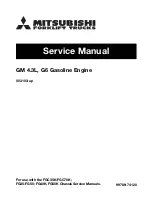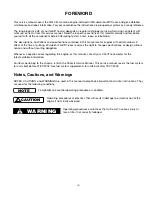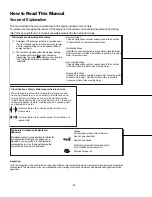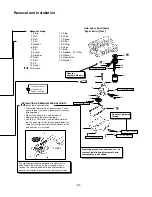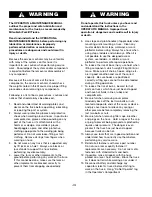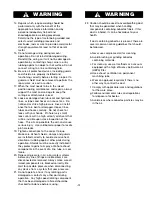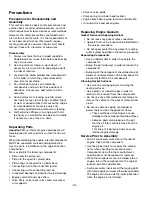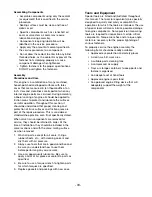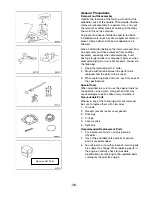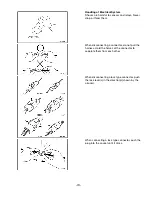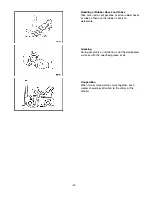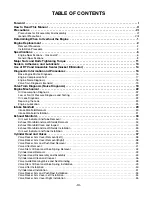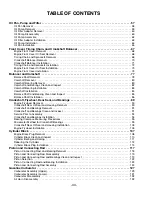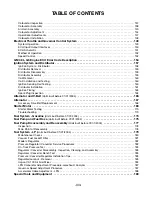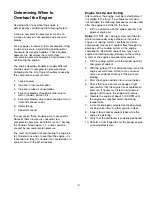
-1-
Determining When to
Overhaul the Engine
Deciding when to overhaul the engine is
determined by considering the following factors:
A drop in compression pressure as well as an
increase in lube oil consumption and excessive
blowby.
Lack of power, increase in fuel consumption, drop
in lube oil pressure, hard starting and abnormal
sound are also engine troubles. These troubles,
however, are not always the result of low
compression pressure and give no valid reason for
overhauling the engine.
The engine develops troubles of widely different
varieties when its compression pressure drops.
Following are the list of typical troubles caused by
this compression pressure fault.
1.
Lack of power
2.
Increase in fuel consumption
3.
Increase in lube oil consumption
4.
Excessive blowby through breather due to
worn cylinders, pistons, etc.
5.
Excessive blowby due to poor seating of worn
inlet and exhaust valves
6.
Hard starting
7.
Abnormal sound
In most cases, these troubles occur concurrently.
Some of them are directly caused by low
compression pressure, but others are not. Among
the troubles listed above, 1, 2, and 6 could be
caused by low compression pressure.
The most valid reason for overhauling the engine is
(4). To determine when to overhaul the engine, it is
reasonable to take this trouble into consideration in
conjunction with the other troubles.
Engine Set-Up and Testing
After overhaul, the engine must be tested before it
is installed in the truck. If a suitable test stand is
not available, the following procedures can be used
after the engine is installed in the truck.
1.
Fill the crankcase with the proper quantity and
grade of engine oil.
Notice
: DO NOT use cooling system seal tabs (or
similar compounds) unless otherwise instructed.
The use of cooling system seal tabs (or similar
compounds) may restrict coolant flow through the
passages of the cooling system or the engine
components. Restricted coolant flow may cause
engine overheating and/or damage to the cooling
system or the engine components/assembly.
2.
Fill the cooling system with the proper quantity
and grade of coolant.
3.
With the ignition OFF or disconnected, crank the
engine several times. Listen for any unusual
noises or evidence that any of the parts are
binding.
4.
Start the engine and listen for unusual noises.
5.
Check the truck oil pressure gauge or light
and confirm that the engine has acceptable oil
pressure. If necessary, install an oil pressure
gauge and measure the engine oil pressure.
6.
Operate the engine at about 1,000 RPM until
the engine has reached normal operating
temperature.
7.
Listen for improperly adjusted or sticking valves,
sticking valve lifters or other unusual noises.
8.
Inspect for oil and/or coolant leaks while the
engine is operating.
9.
Verify that the distributor is properly positioned.
10. Perform a final inspection for the proper engine
oil and coolant levels.

